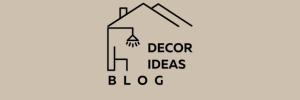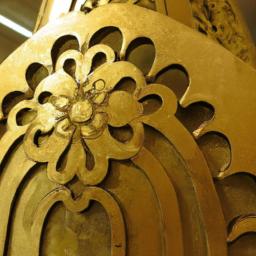Discover the world of 05 75 00 decorative formed metal: A comprehensive guide to design, installation, and cost considerations for this versatile material.
Decorative formed metal is a versatile and popular material used in construction projects worldwide. From intricate ornamental designs to functional applications, decorative formed metal offers unparalleled design flexibility and durability. In this article, we will explore the world of decorative formed metal, including its definition, common applications, design options, installation, maintenance, and cost considerations.
Introduction to Decorative Formed Metal
Decorative formed metal refers to a variety of metal sheets or panels that have been shaped or formed into unique designs, patterns, or textures. It is commonly used in architectural, interior, and exterior design projects, ranging from building facades, railings, ceilings, and lighting fixtures to furniture, artwork, and signage.
Decorative formed metal can be made from a variety of metals, including stainless steel, aluminum, copper, brass, and bronze. The material’s thickness, finish, and color can be customized to meet specific project requirements. Its versatility, durability, and aesthetic appeal make it a top choice for many architects, designers, and builders.
Whether you’re looking to create a distinct visual effect or add functionality to your project, decorative formed metal offers endless possibilities. Let’s dive deeper into the world of decorative formed metal and explore its many design, installation, and cost considerations.
Understanding 05 75 00 Decorative Formed Metal
Overview of 05 75 00 Specification
05 75 00 is a specification set by the Construction Specifications Institute (CSI) that outlines the requirements for decorative formed metal used in construction projects. The specification covers the materials, finishes, fabrication, installation, and maintenance requirements for decorative formed metal.
The 05 75 00 specification ensures that the decorative formed metal used in construction projects meets the highest standards of quality and durability. Architects, designers, and builders can refer to this specification to ensure that their decorative formed metal products meet the necessary requirements.
Materials Commonly Used in Decorative Formed Metal
Decorative formed metal can be made from a variety of materials, including stainless steel, aluminum, copper, brass, and bronze. Each material has its unique properties, finishes, and colors, allowing architects and designers to choose the best material for their project.
Stainless steel is a popular choice for its durability, corrosion resistance, and strength. It can be finished in a variety of textures and colors, making it a versatile choice for many applications.
Aluminum is lightweight, easy to fabricate, and resistant to corrosion. It is an excellent choice for applications that require a lightweight material, such as ceiling panels and decorative screens.
Copper offers a unique aesthetic appeal, with its natural patina finish that develops over time. It is also highly durable and resistant to corrosion, making it a popular choice for exterior applications.
Brass and bronze are both alloys of copper, with brass containing zinc and bronze containing tin. They offer unique finishes and colors, making them popular for decorative applications.
Benefits of Using Decorative Formed Metal in Construction
Decorative formed metal offers many benefits for construction projects, including its durability, versatility, and aesthetic appeal. It can be customized to meet specific project requirements, including its thickness, finish, and color.
Decorative formed metal is also highly durable and resistant to corrosion, making it a long-lasting material choice. Its versatility allows it to be used in many different applications, from building facades and interior design elements to furniture and artwork.
Overall, decorative formed metal offers architects, designers, and builders an unparalleled level of design flexibility and durability, making it a top choice for many construction projects.
Design Options for 05 75 00 Decorative Formed Metal
Decorative formed metal offers an endless array of design options, making it an ideal material for creating unique and visually stunning projects. Here are some common design options to consider:
Different Types of Decorative Formed Metal Designs
There are various types of decorative formed metal designs available, including:
- Perforated Panels: These panels are made by punching holes or slots into the metal sheet, creating a pattern or design that can be customized to any size or shape.
- Embossed Panels: These panels are made by impressing a design onto the metal sheet, creating a raised or recessed pattern.
- Etched Panels: These panels are made by chemically etching a design onto the metal sheet, creating a textured or patterned surface.
- Laser Cut Panels: These panels are made by cutting intricate designs into the metal sheet using laser technology.
Customization Options for Unique Designs
One of the main advantages of decorative formed metal is its customization options. Here are some ways to customize your design:
- Material Thickness: The thickness of the metal sheet can be customized to meet specific project requirements.
- Finish: The metal sheet can be finished in various ways, including brushed, polished, or painted, to achieve the desired look and feel.
- Color: The metal sheet can be painted or powder-coated in a range of colors to match the design scheme.
- Shape and Size: The metal sheet can be cut to any shape or size, allowing for limitless design possibilities.
Choosing the Right Design for Your Project
When choosing a decorative formed metal design, consider the following:
- Functionality: The design should meet the functional requirements of the project, whether it’s providing shade, security, or aesthetic appeal.
- Style: The design should match the overall style and theme of the project, whether it’s traditional, modern, or industrial.
- Durability: The design should be durable and able to withstand weathering, corrosion, and wear and tear.
With these design options and considerations in mind, you can create a unique and visually striking project using decorative formed metal.
Installation and Maintenance of 05 75 00 Decorative Formed Metal
Decorative formed metal is an excellent choice for various design and construction projects. However, proper installation and maintenance are essential to ensure the material’s longevity and functionality. In this section, we will explore the installation methods, maintenance tips, and common issues associated with decorative formed metal.
Installation Methods for Decorative Formed Metal
Decorative formed metal can be installed using various methods, depending on the project’s requirements and the panel’s size and shape. The most common installation methods include mechanical fastening, adhesive bonding, and welding.
Mechanical fastening involves using screws, bolts, or clips to secure the panels to the substrate or framing system. This method is ideal for larger panels or those subjected to wind loads or other external forces.
Adhesive bonding involves using high-strength adhesives to bond the panels to the substrate, creating a seamless and smooth finish. This method is ideal for smaller panels or those with complex shapes.
Welding involves fusing the panels together using heat and pressure, creating a strong and durable bond. This method is ideal for panels with intricate designs or those requiring high strength and rigidity.
Tips for Proper Maintenance
Proper maintenance is essential to ensure the longevity and functionality of decorative formed metal. Here are some tips for maintaining decorative formed metal:
- Regularly clean the panels using a gentle detergent and water to remove dirt, dust, and debris.
- Avoid using harsh chemicals or abrasive cleaners that can damage the panels’ finish or texture.
- Inspect the panels regularly for signs of corrosion, damage, or wear and tear.
- Touch up any scratches or chips in the panels’ finish using a matching touch-up paint or coating.
Common Issues and How to Address Them
Like any construction material, decorative formed metal can experience common issues such as corrosion, fading, or damage. Here are some common issues and how to address them:
- Corrosion: Regular cleaning and maintenance can help prevent corrosion, but if it does occur, it’s essential to address it promptly. Sandblasting, repainting, or applying a protective coating can help prevent further corrosion.
- Fading: Over time, decorative formed metal can fade or lose its color due to exposure to sunlight or harsh weather conditions. Applying a UV-resistant coating or paint can help prevent fading and extend the panels’ lifespan.
- Damage: Accidental damage or wear and tear can occur over time, but if the damage is severe, it’s essential to address it promptly. Repairing or replacing the damaged panels can ensure the project’s overall integrity and aesthetics.
Cost Considerations for 05 75 00 Decorative Formed Metal
When it comes to construction projects, budget is often a major consideration. While decorative formed metal offers many benefits, its cost may be higher than other materials. However, the long-term durability and aesthetic appeal of decorative formed metal may outweigh the initial investment for many projects. Here are some cost considerations to keep in mind when planning your decorative formed metal project.
Factors that Affect the Cost of Decorative Formed Metal
Several factors can affect the cost of decorative formed metal, including the type of metal, the thickness, and the finish. Customization options, such as unique designs or finishes, may also increase the cost. In addition, the size and complexity of the project can impact the cost, as larger or more complex projects may require more time and materials.
Comparing the Cost of Decorative Formed Metal to Other Materials
While decorative formed metal may have a higher upfront cost than other materials, such as wood, plastic, or glass, it offers unique benefits that can make it a more cost-effective option in the long run. For example, decorative formed metal is highly durable, weather-resistant, and low-maintenance, which can reduce the need for repairs or replacements over time.
Budgeting Tips for Decorative Formed Metal Projects
To ensure your decorative formed metal project stays within budget, it’s important to plan carefully and consider all cost factors. Start by determining your project’s size, design, and customization requirements. Then, research different metal types, finishes, and thicknesses to find the most cost-effective options. Finally, work with a reputable supplier or contractor who can provide accurate cost estimates and help you stay within budget. By following these tips, you can create a stunning decorative formed metal project without breaking the bank.
Conclusion: Incorporating Decorative Formed Metal in Your Construction Project
In conclusion, decorative formed metal is a versatile and durable material that offers a wide range of design options for construction projects. From its unique designs to its customization options, decorative formed metal can add a touch of elegance and functionality to your project.
When incorporating decorative formed metal into your project, it is essential to consider factors such as design, installation, and cost. By working with a professional, you can ensure that your project is executed smoothly and efficiently, with minimal impact on your budget.
At Decor Ideas Blog, we offer comprehensive services for decorative formed metal projects, from design to installation and maintenance. Our team of experts has years of experience working with decorative formed metal, and we are committed to delivering high-quality results that meet your specific needs.
So, if you’re looking to incorporate decorative formed metal into your next construction project, contact us today. We’ll work with you to create a unique and functional design that exceeds your expectations.

